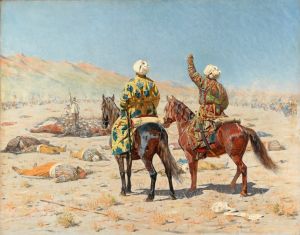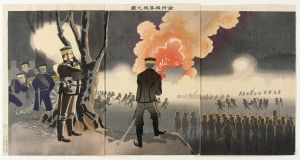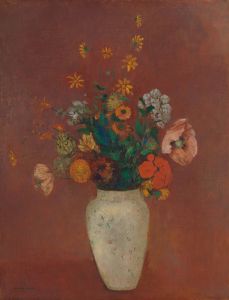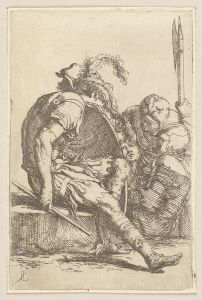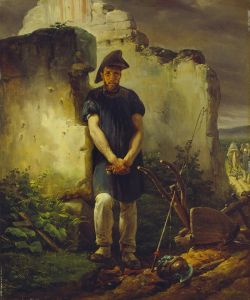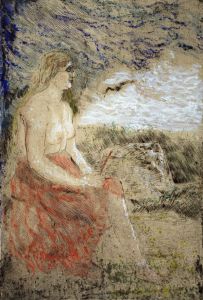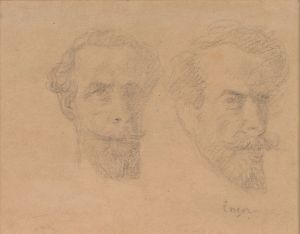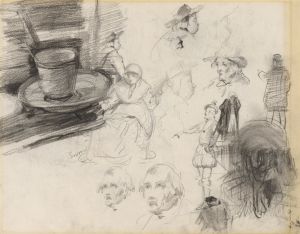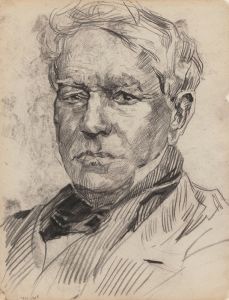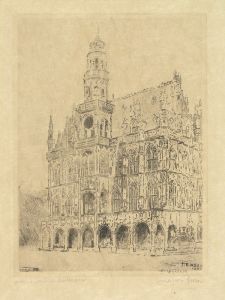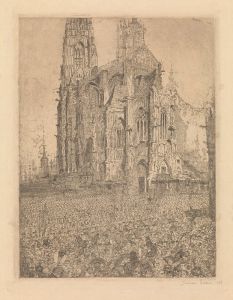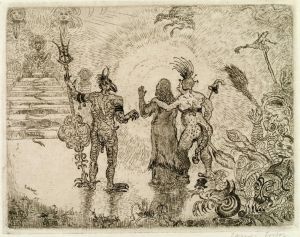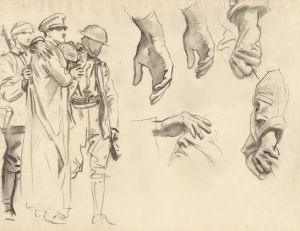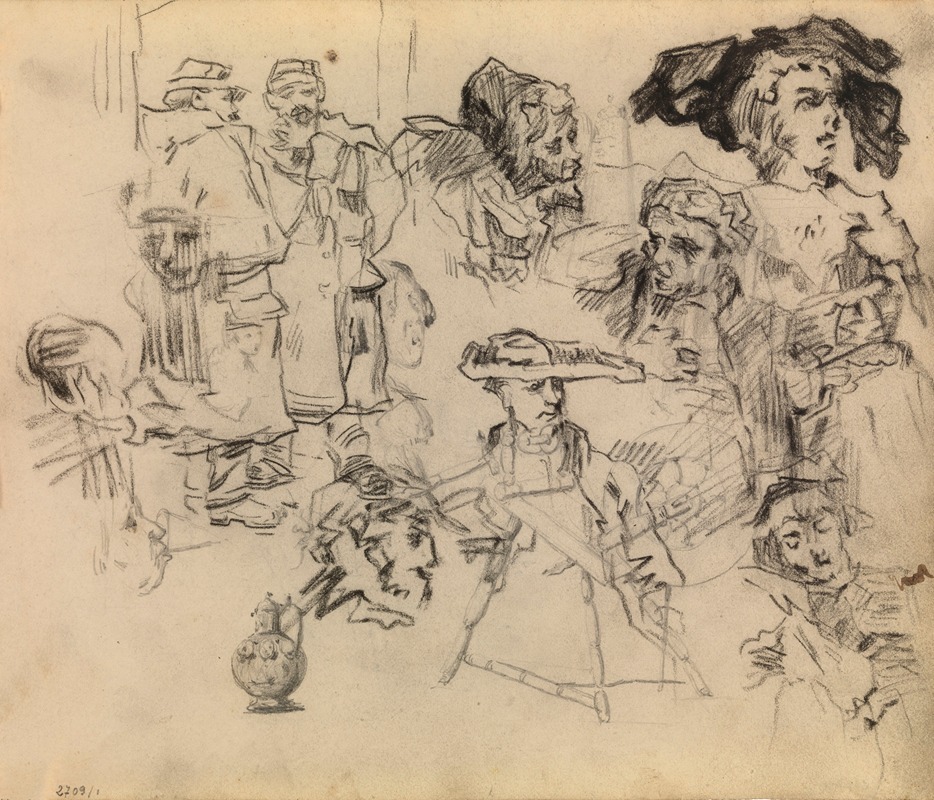
Vase, Spinning Wheel, Soldiers, Women
A hand-painted replica of James Ensor’s masterpiece Vase, Spinning Wheel, Soldiers, Women, meticulously crafted by professional artists to capture the true essence of the original. Each piece is created with museum-quality canvas and rare mineral pigments, carefully painted by experienced artists with delicate brushstrokes and rich, layered colors to perfectly recreate the texture of the original artwork. Unlike machine-printed reproductions, this hand-painted version brings the painting to life, infused with the artist’s emotions and skill in every stroke. Whether for personal collection or home decoration, it instantly elevates the artistic atmosphere of any space.
James Ensor, a prominent Belgian painter, is known for his unique and often surreal style that blends elements of symbolism and expressionism. One of his intriguing works is "Vase, Spinning Wheel, Soldiers, Women," which reflects his distinctive approach to art. Ensor's work often features a combination of fantastical elements and social commentary, and this painting is no exception.
"Vase, Spinning Wheel, Soldiers, Women" is a remarkable example of Ensor's ability to juxtapose seemingly unrelated objects and figures to create a complex narrative. The painting includes a vase, a spinning wheel, soldiers, and women, each element contributing to the overall composition and thematic depth of the piece. Ensor's use of vibrant colors and bold brushstrokes is evident in this work, showcasing his skill in creating dynamic and visually engaging scenes.
The inclusion of soldiers and women in the painting may suggest a commentary on societal roles and conflicts. Ensor often explored themes of power, authority, and the human condition, and these elements are recurrent in his body of work. The soldiers could symbolize the presence of military influence or conflict, while the women might represent domestic life or societal expectations. The spinning wheel, a traditional symbol of domesticity and labor, contrasts with the military imagery, potentially highlighting the tension between public and private spheres.
Ensor's fascination with masks and theatrical elements is another hallmark of his style, although this particular painting does not prominently feature masks, it still carries an air of theatricality through its composition and the interaction of its figures. The vase, a seemingly mundane object, might serve as a focal point or a symbol of beauty and fragility amidst the surrounding chaos.
James Ensor was part of the avant-garde movement in Belgium and was associated with the group Les XX, which included artists who were pushing the boundaries of traditional art forms. His work was often met with mixed reactions due to its unconventional style and provocative themes. Despite this, Ensor's influence on modern art is undeniable, and he is considered a precursor to movements such as expressionism and surrealism.
"Vase, Spinning Wheel, Soldiers, Women" exemplifies Ensor's innovative approach to art, where he combines everyday objects with fantastical elements to challenge viewers' perceptions and provoke thought. His ability to blend reality with imagination allows his work to transcend time, continuing to captivate audiences with its complexity and depth.
While specific details about the creation and exhibition history of "Vase, Spinning Wheel, Soldiers, Women" are limited, the painting remains a testament to Ensor's artistic vision and his contribution to the evolution of modern art. Through works like this, Ensor has left a lasting legacy that continues to inspire and influence artists and art enthusiasts around the world.





